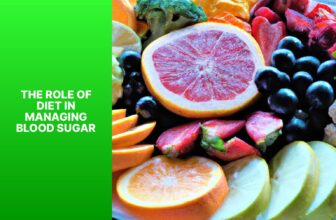A Guide to Making Informed Choices: Understanding Food Labels
How to Read and Interpret Food Labels: A Comprehensive Guide
Reading and interpreting food labels is an important part of making informed decisions about the food we eat. Knowing how to read and interpret food labels can help us make healthier choices and ensure that we are getting the most out of our food. This comprehensive guide will provide an overview of how to read and interpret food labels, including what information is included, how to interpret it, and how to use it to make healthier choices.
The first step in reading and interpreting food labels is to understand what information is included. Food labels typically include the following information:
• Serving size: This is the amount of food that is considered one serving. It is important to pay attention to this information, as the nutritional information listed on the label is based on this serving size.
• Calories: This is the amount of energy that is contained in one serving of the food.
• Total fat: This is the amount of fat that is contained in one serving of the food.
• Saturated fat: This is the amount of saturated fat that is contained in one serving of the food.
• Trans fat: This is the amount of trans fat that is contained in one serving of the food.
• Cholesterol: This is the amount of cholesterol that is contained in one serving of the food.
• Sodium: This is the amount of sodium that is contained in one serving of the food.
• Total carbohydrates: This is the amount of carbohydrates that are contained in one serving of the food.
• Dietary fiber: This is the amount of dietary fiber that is contained in one serving of the food.
• Sugars: This is the amount of sugars that are contained in one serving of the food.
• Protein: This is the amount of protein that is contained in one serving of the food.
• Vitamins and minerals: This is the amount of vitamins and minerals that are contained in one serving of the food.
Once you understand what information is included on a food label, you can begin to interpret it. It is important to remember that the information listed on the label is based on one serving of the food. Therefore, if you eat more than one serving, you will need to multiply the nutritional information accordingly.
When interpreting the nutritional information on a food label, it is important to consider the recommended daily values for each nutrient. The recommended daily values are based on a 2,000 calorie diet and are listed on the label as a percentage. For example, if the label states that a food contains 10% of the recommended daily value for sodium, this means that one serving of the food contains 200 milligrams of sodium, which is 10% of the recommended daily value of 2,000 milligrams.
Finally, it is important to use the information on food labels to make healthier choices. For example, if you are trying to reduce your sodium intake, you should look for foods that contain less than 10% of the recommended daily value for sodium. Similarly, if you are trying to increase your fiber intake, you should look for foods that contain more than 10% of the recommended daily value for dietary fiber.
By following this comprehensive guide, you can learn how to read and interpret food labels and use the information to make healthier choices. Knowing how to read and interpret food labels can help you make informed decisions about the food you eat and ensure that you are getting the most out of your food.
The Pros and Cons of Different Types of Food Labels
Food labels are an important part of the food industry, providing consumers with information about the food they are purchasing. Different types of food labels exist, each with their own advantages and disadvantages. This article will discuss the pros and cons of the most common types of food labels.
Nutrition Facts Labels
Nutrition facts labels are the most common type of food label. They provide information about the nutritional content of a food product, including the amount of calories, fat, sodium, and other nutrients. Pros of nutrition facts labels include that they provide consumers with the information they need to make informed decisions about their food choices. Additionally, they can help people with dietary restrictions or allergies to identify foods that are safe for them to eat. Cons of nutrition facts labels include that they can be difficult to interpret, and the information they provide may not be accurate.
Organic Labels
Organic labels are used to indicate that a food product has been produced without the use of synthetic pesticides, fertilizers, or other chemicals. Pros of organic labels include that they provide assurance that the food product is free of potentially harmful chemicals. Additionally, organic labels can help consumers make more sustainable food choices. Cons of organic labels include that they can be expensive, and the standards for organic certification can vary from country to country.
Allergen Labels
Allergen labels are used to indicate that a food product contains an allergen, such as peanuts, eggs, or dairy. Pros of allergen labels include that they can help people with allergies to identify foods that are safe for them to eat. Additionally, allergen labels can help people with dietary restrictions to avoid foods that contain ingredients they cannot eat. Cons of allergen labels include that they can be difficult to interpret, and the information they provide may not be accurate.
In conclusion, different types of food labels exist, each with their own advantages and disadvantages. Nutrition facts labels provide consumers with the information they need to make informed decisions about their food choices, while organic labels provide assurance that the food product is free of potentially harmful chemicals. Allergen labels can help people with allergies or dietary restrictions to identify foods that are safe for them to eat.
Exploring the Benefits of Understanding Food Labels: A Guide to Making Healthier Choices
Food labels are an important tool for making informed decisions about the food we eat. Understanding food labels can help us make healthier choices and ensure that we are getting the most out of our food. This guide will provide an overview of the benefits of understanding food labels and how to use them to make healthier choices.
One of the primary benefits of understanding food labels is that it can help us make healthier choices. Food labels provide information about the nutritional content of a food, including the amount of calories, fat, sodium, and other nutrients. By understanding this information, we can make informed decisions about the foods we choose to eat. For example, if we are trying to reduce our sodium intake, we can look for foods with lower sodium content.
Another benefit of understanding food labels is that it can help us make better decisions about portion sizes. Food labels provide information about the recommended serving size for a particular food. By understanding this information, we can make sure that we are not overeating or eating too little.
Finally, understanding food labels can help us make better decisions about the ingredients in our food. Food labels provide information about the ingredients used in a food, including any potential allergens. By understanding this information, we can make sure that we are not consuming any ingredients that could cause an allergic reaction.
Understanding food labels can be a valuable tool for making healthier choices. By understanding the information provided on food labels, we can make informed decisions about the foods we choose to eat and ensure that we are getting the most out of our food.







